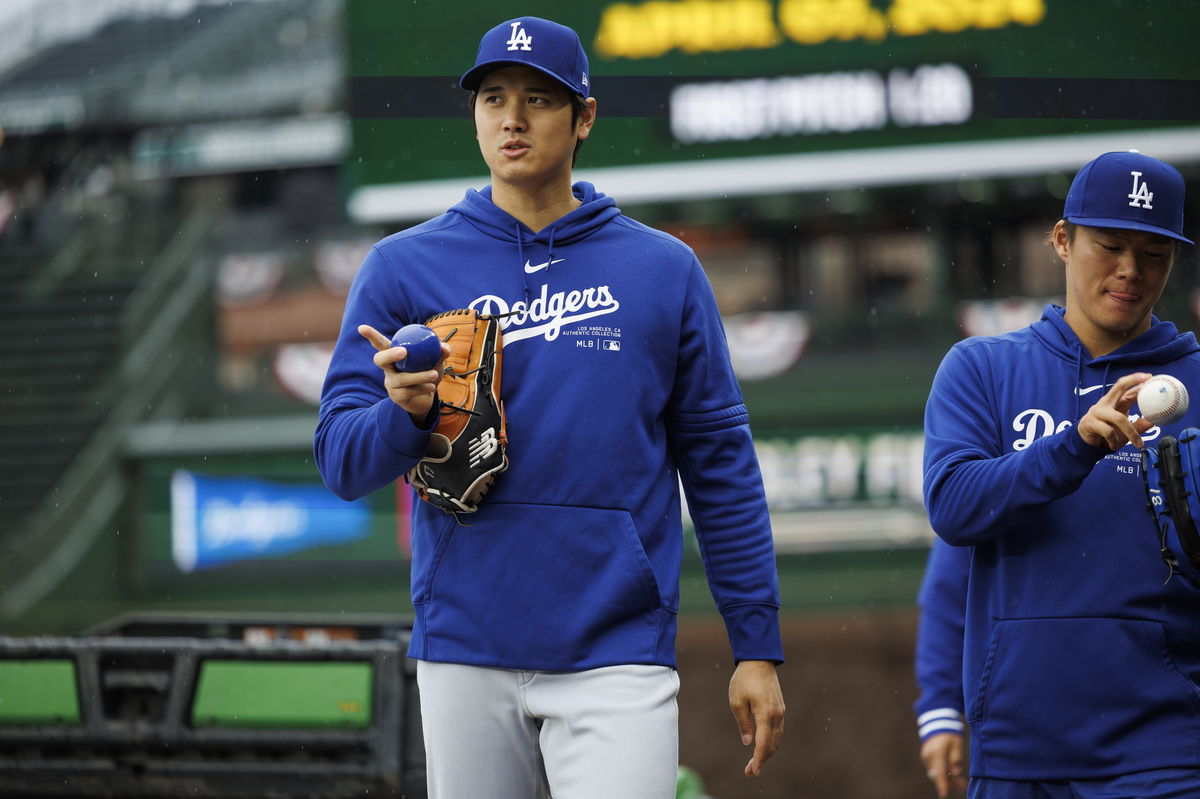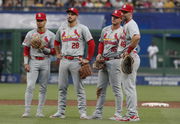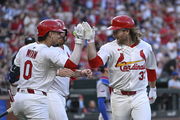

In the hallowed halls of baseball history, a prophecy whispers from a century ago. The Sultan of Swat—Babe Ruth, once proclaimed in 1918—“I don’t think a man can pitch in his regular turn, and play every other game at some other position, and keep that pace year after year.” Now, in the era of Shohei Ohtani—the Los Angeles Dodgers’ two-way phenom, who’s all set to rule the diamond both behind the plate and on the mound—Ruth’s words echo with an unsettling prescience.
Watch What’s Trending Now!
Ohtani’s 2024 season is a symphony of shattered records and defied expectations. Entering May 19th, he was leading the National League in a mesmerizing array of offensive categories: home runs, hits, batting average (.353), slugging (.658), and OPS (1.080). His wRC+ of 205, a testament to his offensive dominance, was light-years ahead of his peers. This wasn’t just baseball anymore. It’s artistry on a diamond canvas. Yet the specter of Ruth’s prophecy looms large.
The physical toll of a two-way player is a relentless grind that can bring up complications at any given place or time. “Let him do both. He’ll eventually… you know,” analyst Chris Boussard mused on “The Odd Couple” podcast, hinting at the inevitable decline that awaits even the most extraordinary athletes. The Unicorn—for all his superhuman feats—is not immune to the ravages of time and wear. He’s not an invincible superhero in real life, after all.
ADVERTISEMENT
The Blue Crew, blessed with Shohei Ohtani’s incandescent talent, faces a dilemma of Ruthian proportions. Rob Parker, Boussard’s co-host, aptly highlighted the team’s embarrassment of riches: “The Dodgers are loaded, their lineup, right? Loaded!” With a batting order bursting at the seams with talent, is the Unicorn’s bat—as magnificent as it is—worth the risk to his pitching arm, a weapon of equal, if not greater, value?
Lengthy throwing session for Shohei Ohtani pregame in Cincinnati.
Recently, Dodgers Pitching Coach Mark Prior said hopefully, by playoffs, Ohtani is facing hitters in live BP. pic.twitter.com/xfoih2i26O
— Charlie Clifford (@char_cliff) May 24, 2024
An ESPN report delves into this conundrum, dissecting Shohei Ohtan’s Wins Above Replacement (WAR) calculations and revealing a hidden truth. The designated hitter status actually masks his true value. Were he to grace center field—a position well within his athletic capabilities—his WAR would soar, potentially catapulting him into the pantheon of all-time greats alongside Ruth, Gehrig, and Barry Bonds. This projection also suggests that Ohtani’s potential is not merely great but historically significant—only if he focuses on a single role.
ADVERTISEMENT
This creates the space to further speculate on the tantalizing prospect of Shotime shedding his pitching duties. Freed from the rotation’s physical demands, could he ascend to even greater offensive heights? Or should he choose to play as a closer, as opposed to facing a starter’s duress, to maintain both his forms behind the plate and on the mound, as Rob suggests?
Could Ohtani’s baserunning and fielding evolve into otherworldly weapons? These questions remain unanswered, but the possibilities are intoxicating. Especially when considering that right now, his offensive bWAR is already at 8.96 this season compared to last year’s 7.04 and 3.09 a year before that. On top of it all, Ruth’s own career arc serves as a poignant parable.
ADVERTISEMENT
Shohei Ohtani’s hidden value beyond stats
It’s an infallible fact that Shotime’s transformation into a full-time slugger starting this year has unleashed an offensive juggernaut, one that’s been rewriting baseball’s record books. Au contraire. In Ruth’s first five seasons as a Yankee, he averaged an astonishing 11.2 bWAR, a testament to his unmatched hitting prowess. While Ohtani might not replicate Ruth’s stratospheric numbers—or at least, not just yet—his current trajectory certainly hints at the potential for unprecedented offensive growth.
Through 737 career MLB games:
Babe Ruth —> 177 home runs, 499 Ks pitching
Shohei Ohtani —> 182 home runs, 608 Ks pitching pic.twitter.com/BH84BWgyK8— Codify (@CodifyBaseball) May 7, 2024
ADVERTISEMENT
The “Babe Ruth Problem,” as ESPN likes to dub this predicament, is a riddle wrapped within an enigma. The Dodgers, like the Boston Red Sox from a century ago, must grapple with the allure of a two-way Unicorn versus the potential for maximizing Shotime’s value through specialization. As Boussard quipped, “Thankfully you don’t (have to choose)… But I would pitch him next year if I had to only choose one.” However, the shadow of Ruth’s prophecy lengthens with each passing game.
Top Stories
Toronto Loyalist Raises Alarm as Shocking Bo Bichette Update Puts Blue Jays’ 2026 Dreams on the Brink

Mets Become Leading Contender For 30YO Ex-Phillies Star after David Stearns’ Mega Offseason Misses, Per Insider

$275M Cardinals Star’s MLB Future All but Sealed as U.S. Sportscaster Asks $2.75B Team to Make Bold Move

Red Sox’s Alex Bregman Fallout Becomes Evident as Two MLB Rivals Ignite Fierce Bidding War, per Report

Blue Jays-Dodgers Suffer Bitter Snub As $4B NL West Rival Given Edge In Race For 28YO Cardinals Star

Shohei Ohtani, the modern-day Babe Ruth, is now standing at a crossroads. His and his team’s choices—like those of his legendary predecessor—will shape his legacy and redefine the boundaries of baseball greatness, while leaving a burdensome what if factor regarding his arms’ health. Will he continue to walk the two-way tightrope, defying history and convention? Or will he heed the whispers of the past, embracing a single path to ultimately unlock his full potential?
Ohtani’s current hitting prowess, with a .364 BABIP, may have regressed slightly, but his career .329 BABIP—coupled with decreased strikeout rates and improved exit velocities—suggests nothing short of a sustainable offensive dominance. This further emphasizes the potential he holds if he were to focus solely on hitting.
ADVERTISEMENT
The Dodgers’ dilemma is further complicated by the fact that Shohei Ohtani, unlike Ruth, is an elite pitcher; he used to average 4.3 bWAR per 162 games pitched. Before 2025 arrives, the team must weigh the immediate value of his pitching against the potential long-term gains of a full-time hitter.
ADVERTISEMENT
ADVERTISEMENT
ADVERTISEMENT

